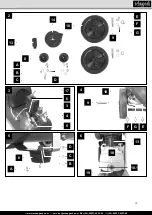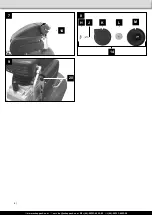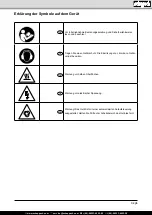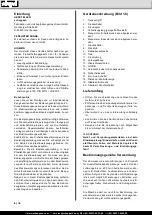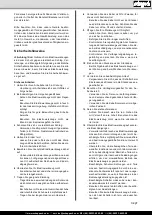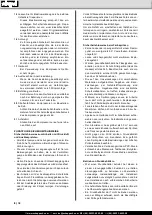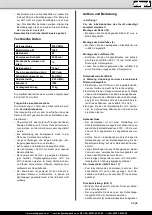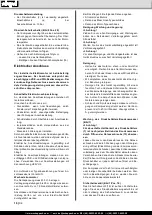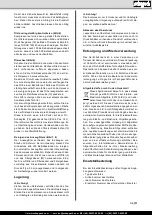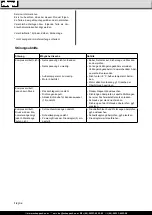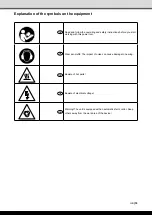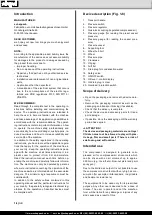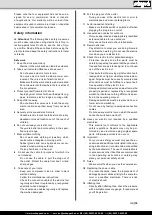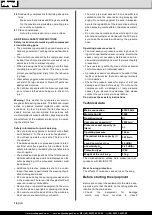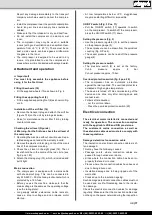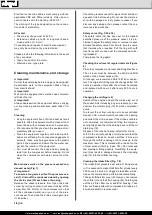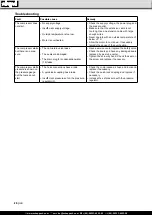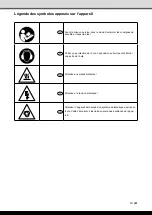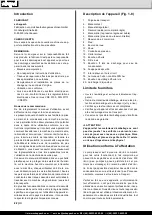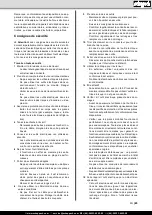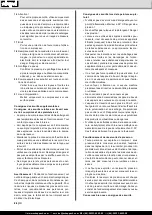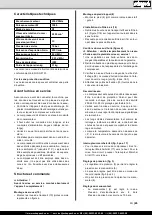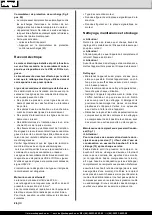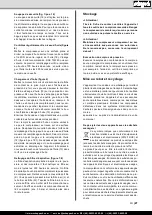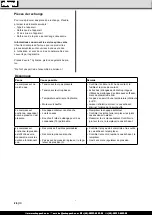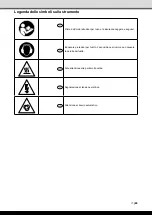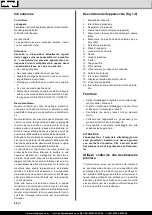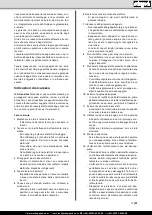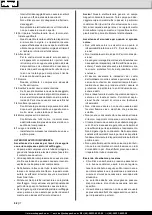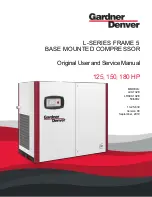
www.scheppach.com
+(49)-08223-4002-99
+(49)-08223-4002-58
| 17
www.scheppach.com
+(49)-08223-4002-99
+(49)-08223-4002-58
GB | 17
• At low temperatures below +5°C, sluggishness
may make starting difficult or impossible.
ON/OFF switch (Fig. 3 Pos. 17)
• Pull the ON/OFF switch (17) upwards to switch
on the compressor. To switch off the compressor,
press the ON/OFF switch (17) down.
Setting the pressure (Fig. 3)
• Use the pressure regulator (3) to set the pressure
on the pressure gauge (5).
• The set pressure can be drawn from the quicklock
coupling (Fig. 3/Pos. 4).
• The vessel pressure can be read off the pressure
gauge (6).
Setting the pressure switch
• The pressure switch (2) is set at the factory.
Cut-in pressure approx. 8 bar
Cut-out pressure approx. 10 bar.
Overload protection switch (fig. 9 pos. 20)
• The compressor has an automatic protection
against thermal overload. The overload protector is
activated at high engine temperature.
• The device is turned off. Re-commissioning of the
device can be done only after cooling down and
manual reset.
• Follows after activation:
– Let the unit cool down
– Press the overload protection switch (20)
Electrical connection
The electrical motor installed is connected and
ready for operation. The connection complies
with the applicable VDE and DIN provisions.
The customer‘s mains connection as well as
the extension cable used must also comply with
these regulations.
Damaged electrical connection cable
The insulation on electrical connection cables is of-
ten damaged.
This may have the following causes:
•
Passage points, where connection cables are
passed through windows or doors.
•
Kinks where the connection cable has been im-
properly fastened or routed.
•
Places where the connection cables have been cut
due to being driven over.
•
Insulation damage due to being ripped out of the
wall outlet.
•
Cracks due to the insulation ageing.
Such damaged electrical connection cables must not
be used and are life-threatening due to the insula-
tion damage.
Check the electrical connection cables for damage
regularly. Make sure that the connection cable does
not hang on the power network during the inspection.
Report any damage immediately to the transport
company which was used to deliver the compres-
sor.
•
Install the compressor near the point of consumption.
•
Avoid long air lines and supply lines (extension
cables).
•
Make sure that the intake air is dry and dustfree.
•
Do not install the compressor in a damp or wet
room.
•
The compressor may only be used in suitable
rooms (with good ventilation and an ambient tem-
perature from +5 °C to 40 °C). There must be no
dust, acids, vapors, explosive gases or inflamma
-
ble gases in the room.
•
The compressor is designed to be used in dry
rooms. It is prohibited to use the compressor in
areas where work is conducted with sprayed water.
Attachment and operation
n
Important!
You must fully assemble the appliance before
using it for the first time!
Fitting the wheels (10)
• Fit the supplied wheels (10) as shown in Fig. 4.
Fitting the supporting foot (8)
• Fit the supplied supporting foot (8) as shown in Fig-
ure 5.
Installation of the air filter (14)
•
Remove the transport plug and attach the air filter
(Figure 7/14) on the unit by turning clockwise.
•
Solve for maintenance the air filter (14) by turning
counter-clockwise..
Checking the oil level (Figure 6)
m
Warning: For the first use, check the oil level of
the compressor.
1 Operating the machine without oil will cause irrepa-
rable damage and render the warranty invalid.
2 Remove the plastic oil inlet plug on top of the crank
box of the compressor casing.
3 Check the oil level in the sight glass (18). The oil
level should be in the centre of the red circle. (see
fig. 6 pos. 18.1)
4 Attach the closing plug (13), which is included and
pull it tight.
Mains connection
• The compressor is equipped with a mains cable
with shock-proof plug. This can be connected to
any 230-240 V~ 50 Hz shock-proof socket which is
protected by a 16 A fuse.
• Before you use the machine, make sure that the
mains voltage is the same as the operating voltage
(see the rating plate).
• Long supply cables, extensions, cable reels etc.
cause a drop in voltage and can impede motor
start-up.

